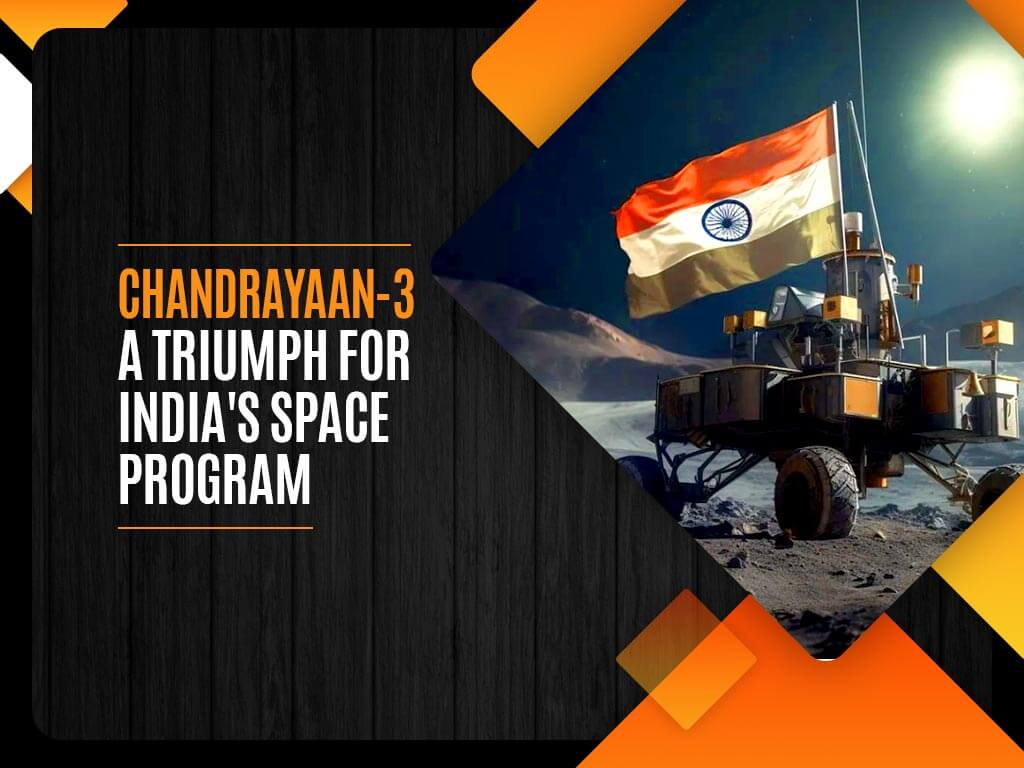Chandrayaan-3: A Triumph for India’s Space Program
India's space program has achieved yet another success with its launch of Chandrayaan-3, the country's third lunar mission.

August 24 – India made history on 23rd August 2023 by successfully landing the first ever spacecraft on the moon’s south pole – the Chandrayaan 3. It was launched on 14th July and consisted of a lander named Vikram and a rover named Pragyan. India is the fourth country to make a soft landing on the surface of the moon.
The spacecraft consists of the carrier rocket, in this case the Chandrayaan-3, a lander which is used land the rover on the moon’s surface, and a rover, a device used for walking the moon.
Congratulating the team of scientists at ISRO, India’s PM Narendra Modi said, “India’s successful moon mission is not India’s alone…Our approach of one earth, one family, one future is resonating across the globe…Moon’s mission is based on the same human-centric approach. So, this success belongs to all of humanity.”
At exactly 6:03 p.m., the lunar lander made a precise touchdown on the lunar surface, sparking jubilant celebrations at the Mission Operations Complex (MOX) located in the ISRO Telemetry, Tracking, and Command Network (ISTRAC) in Bengaluru. Subsequently, the lander flawlessly deployed the rover, tasked with conducting on-site chemical analysis of the lunar terrain throughout its mobility phase. The lander and rover are equipped with scientific instruments designed for experiments on the lunar surface. With a mission lifespan of one lunar day, equivalent to 14 Earth days, this mission marks a significant milestone in exploration.
This was not India’s first attempt to the moon. Chandrayaan 1 was India’s first lunar probe. It was launched on October 22, 2008, and operated until August 28, 2009. The mission’s primary objective was to study the lunar surface and its composition. It also carried a Moon Impact Probe designed to impact the lunar surface and study the composition of the lunar regolith. Chandrayaan 1 was a success, and it made several important discoveries, including the presence of water ice on the moon.
Then came Chandrayaan 2, India’s second lunar probe. It was launched on July 22, 2019, and was intended to soft-land a lander and rover on the lunar surface. The lander, Vikram, and the rover, Pragyan, were successfully deployed from the orbiter, but Vikram lost contact with ground control shortly before it was supposed to land. The mission was partially successful, as the orbiter continued to operate and map the lunar surface.
“This is an incredible moment of joy. As the Project Director of the mission, I take profound satisfaction in reaching this milestone on behalf of the team. The complete mission operations, spanning from launch to landing, unfolded seamlessly according to the planned schedule,” remarked P Veeramuthuvel, the Project Director of Chandrayaan-3.
India’s successful landing of Chandrayaan-3 on the moon’s south pole is a significant milestone in the country’s space exploration program. The mission will help scientists learn more about the moon’s composition and potential for supporting life.



